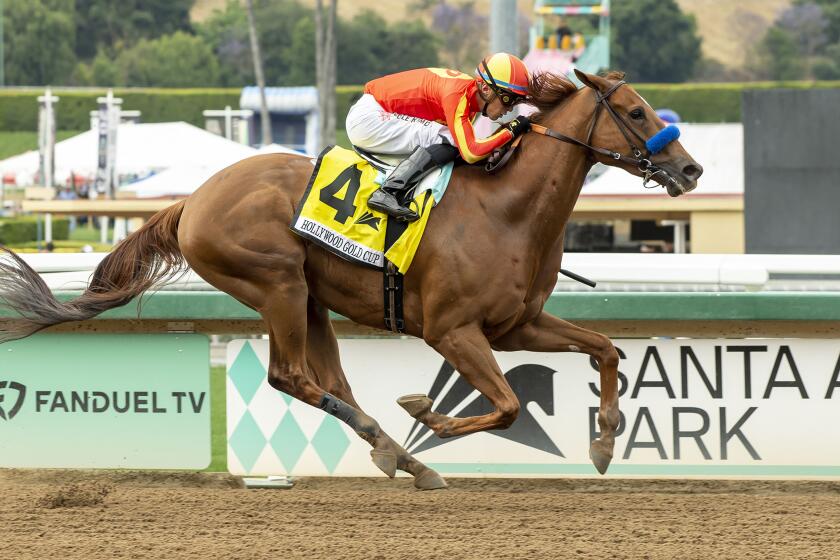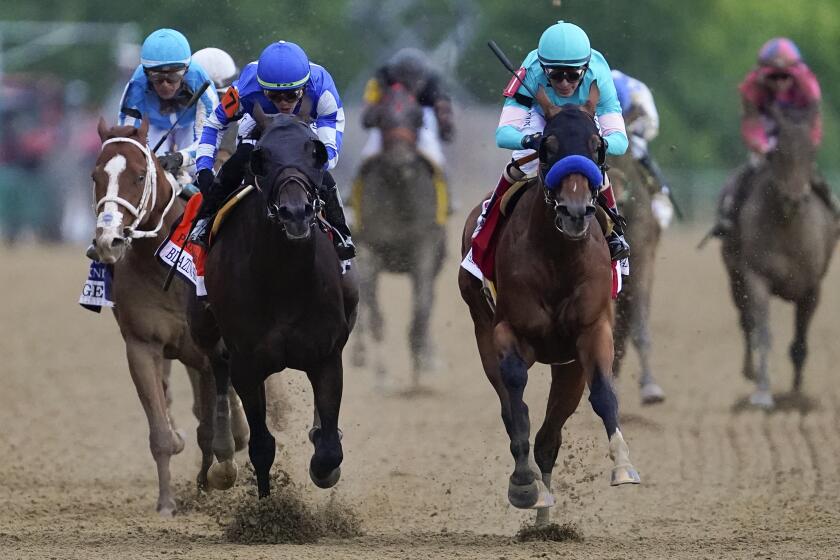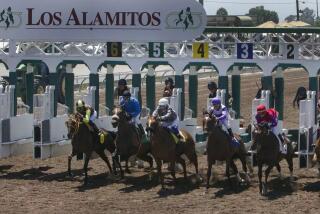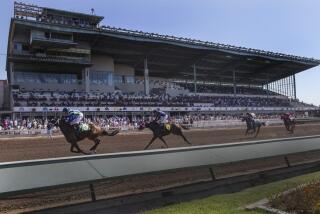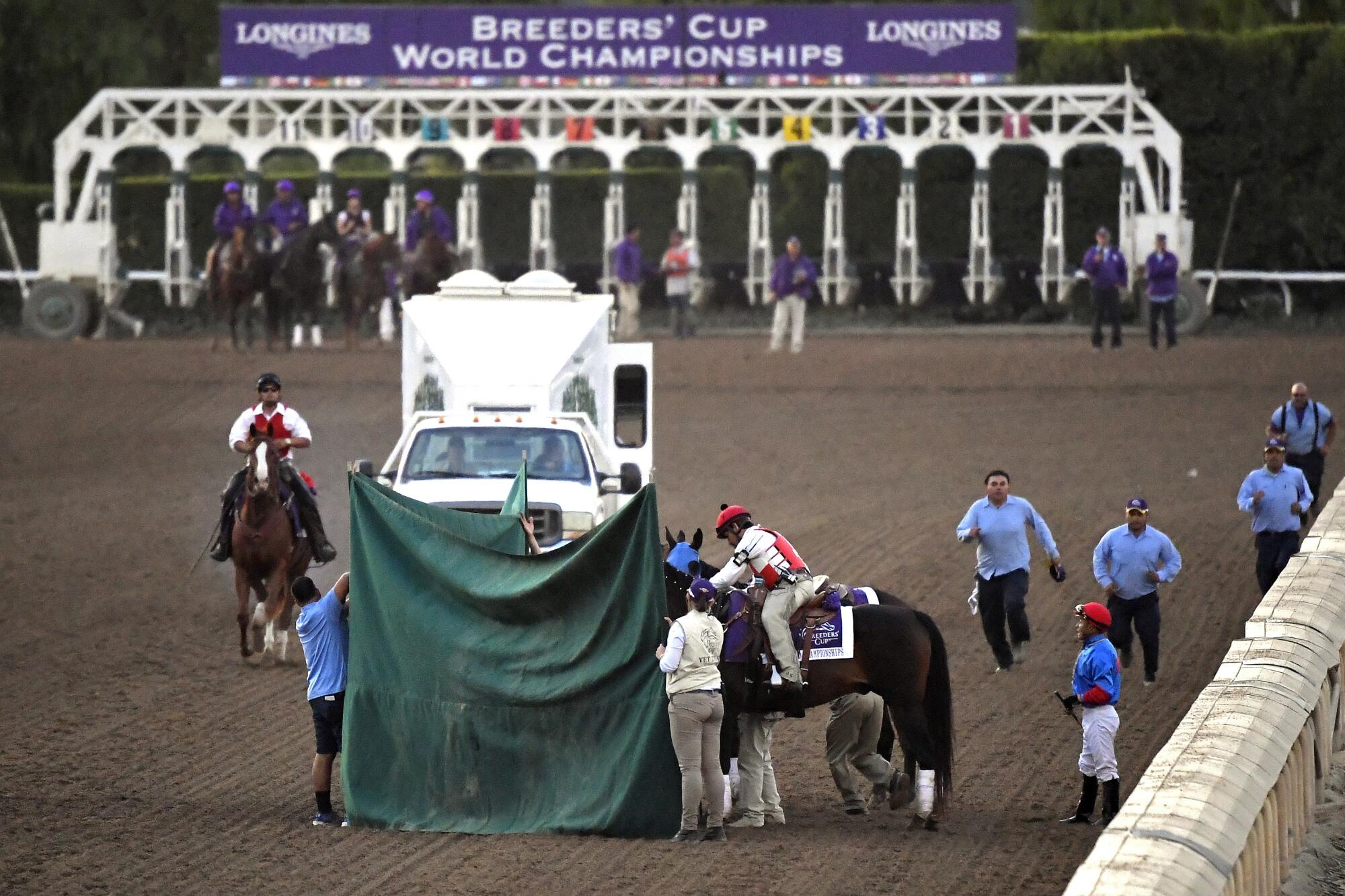
ELMONT, N.Y. — It’s a scene that plays out at racetracks more frequently than anyone wants. A horse is pulled up and out of competition as the race continues and those in attendance cheer for their horse, or more realistically, their wager on that horse.
Those looking to the spot where the horse pulled up see an outrider arrive first. The jockey pulls off the saddling equipment. In a matter of moments, a track veterinarian, who has been following in a vehicle behind the field, starts examining the horse, hoping for the best but prepared for the worst.
An equine ambulance is called and it pulls up very close to the stricken horse. If lucky, the horse is calm and not favoring any limbs. They willingly walk onto the ambulance and it seems as if everything will be OK.
The horse is taken by ambulance to the backside where, if things are good, they go back to their barn. If not, the horse goes to the equine medical center. That is, if it even makes it that far.
The legendary home of the Kentucky Derby moves the remainder of its meet to Ellis Park after 12 horses die on the track since April 27.
For those in attendance, that’s it. End of story. If you are in California or New York, you can check a website to see the outcome. If you are in Kentucky, Florida, Maryland or one of the other 30-plus states that host racing, you might never hear a word.
Finally, through social media or the racetrack grapevine, you are shocked to learn the horse was euthanized. The horse didn’t look that bad. They walked on to the ambulance. If a human walks into an emergency room, there is a good chance they are walking out. Race horses rarely walk into an ER, much less walk out.
How can this be? Why can’t more horses be saved?
Horse racing finds itself jumping from one existential crisis to another.
Even this week, the Belmont Stakes has been put on a temporary hold because of the air quality in New York. If the wind shifts direction and redistributes all the smoke from the Canadian wildfires, which is expected, the race will go on. If not, the third leg of racing’s Triple Crown, might have to be postponed.
Not all the crises are so short term.
During a 15-week period in 2011-12, 21 horses died at Aqueduct in New York and an investigation was launched. Reforms were made. The sport was made better.
In 2019, 30 horses died at Santa Anita and an investigation was launched. Reforms were made. The sport was made better.
This year, 12 horses died at Churchill Downs. An investigation was launched. Racing was moved to another track in Kentucky. But, not before two more race cards were run and training was allowed to continue, still to this day.
All of these incidents are a rallying cry for animal rights activists, who immediately call for an investigation, followed by a plea that the sport be banned everywhere. They have made little headway except in the area of public awareness.
At the height of the Santa Anita crisis, activists pushed for the Los Angeles district attorney to conduct a criminal investigation, which, nine months later, found no criminal animal cruelty or unlawful conduct.
These investigations rarely find a smoking gun. The word “multifactorial” is dropped as often as a Slinky going down a long flight of stairs.
The reason rarely given for a spike in fatalities is the horse itself.
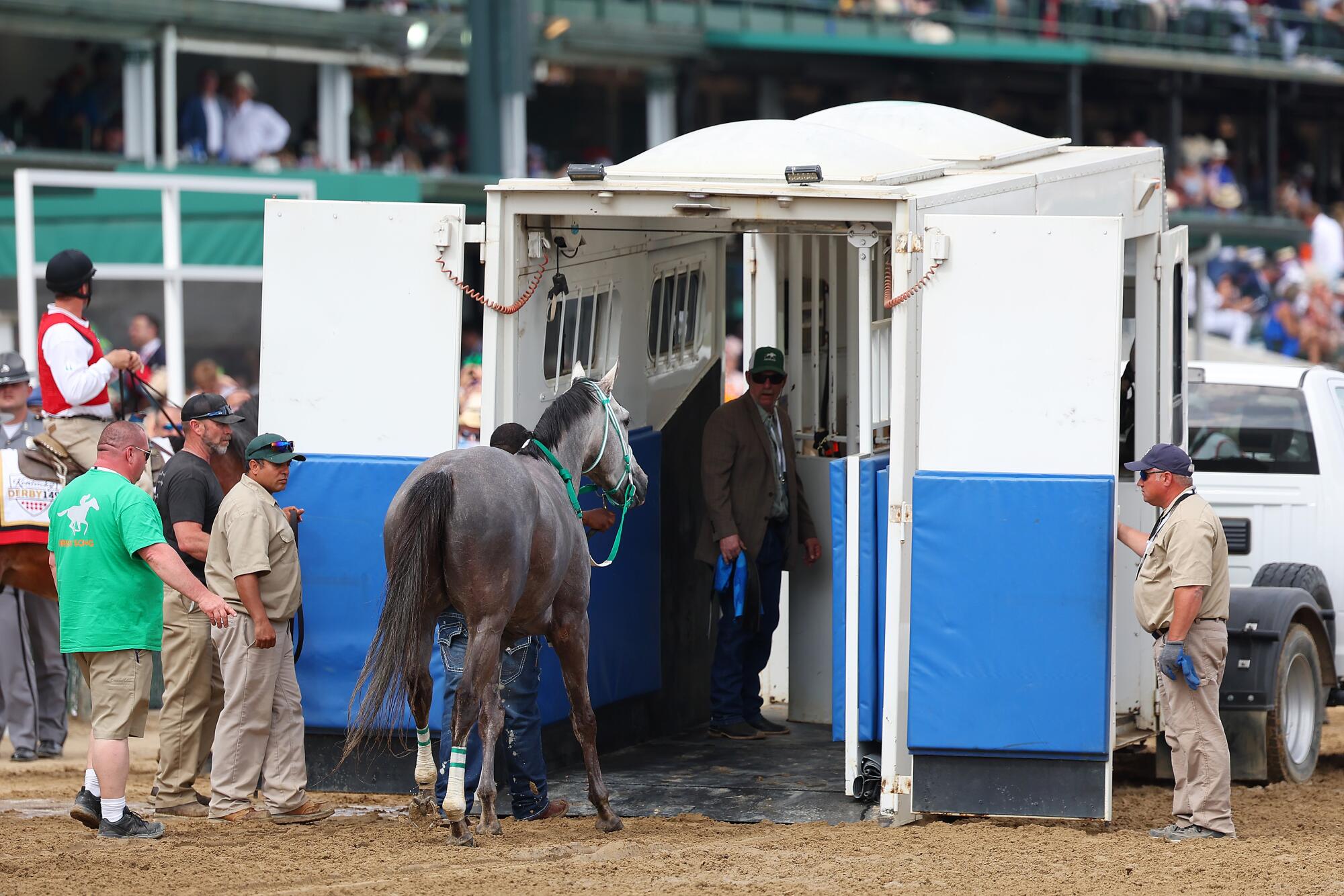
A horse’s anatomy helps explain why more horses can’t be saved. It’s a fact that horsemen accept, but the general public struggles to understand. Everyone wants a sport with no deaths, but those within horse racing know the goal is unattainable.
If you had a table with four legs, spindly legs that become narrower the closer they are to the ground, imagine if the tabletop were 1,000 pounds. Then consider the impact if you lost use of one of those legs, even temporarily, and the pressure it would put on the other three.
“You have risks that are unique to the horse as opposed to a human,” said Dr. Jeff Blea, equine medical director of the California Horse Racing Board. “With a person, you can say, ‘You’ve got a fractured bone, we’re going to put you in traction and keep you in bed for a few weeks or months.’ With the horse, we can’t do that. They don’t tolerate that well.”
Blea separates fractures into two categories, neither with a particularly good outcome.
“With shoulder injuries or humeral stress fractures, those are difficult to save because you have a four-legged animal that you can’t say, ‘Stay in bed until this heals.’”
— Dr. Jeff Blea, CHRB equine medical director
“If it’s an open fracture, where the fracture has penetrated the skin and the bone is exposed, your prognosis rapidly decreases due to infection because you are running on a dirt surface,” Blea said. “Another factor you have to consider depending on the injury, especially to the distal limb [below the knee and hock], is blood flow and nerve innervation.
“An injury that disrupts the blood flow of that injury, regardless of surgical intervention, will not heal. And that horse will suffer. An injury where the blood flow is disrupted or eliminated, those have a much reduced chance of success as well.”
Unlike a human, when a horse is injured, it often will keep on running. It’s the horse’s instinct and often leads to a catastrophic complication.
“With shoulder injuries or humeral [upper limb] stress fractures, those are difficult to save because you have a four-legged animal that you can’t say, ‘Stay in bed until this heals.’ They are moving around, and given their respiratory system, when they tend to be stagnant, and unable to move, there is greater risk of pneumonia,” Blea said.
“And when they are unable to move, they are also at a higher risk of colic [abdominal pain symptomatic of other issues] because of the intestinal tract of a horse and how it works as an herbivore.”
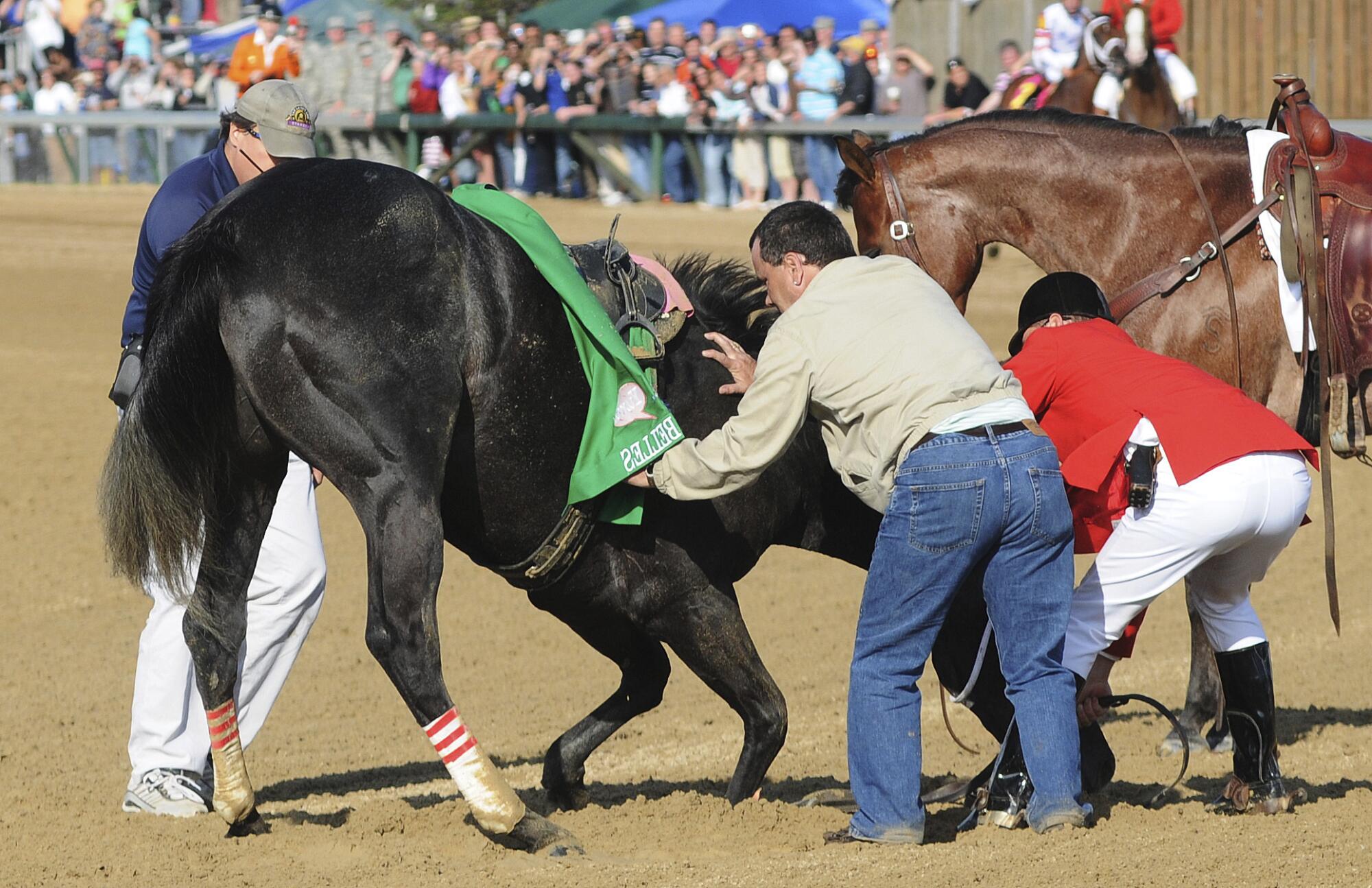
The short answer is a healing horse just can’t stay still without risking other serious complications.
One of the most painful, and least understood, side effects of an injured or sick horse is laminitis. The tissue between the hoof and the coffin bone, the lowest bone in a horse, becomes inflamed and in the some cases the two parts separate.
“There are a ton of reasons why horses get laminitis,” said Dr. Ryan Carpenter, an equine surgeon based at Santa Anita. “We’ve learned a lot about laminitis over the years, but it’s still a mystery. We will still have horses succumb to laminitis today despite all the advances in technology and surgical intervention.”
Laminitis was what eventually forced the euthanasia of Barbaro, the winner of the 2006 Kentucky Derby who broke down in the Preakness Stakes. The best veterinarians and surgeons in the country, using the most advanced techniques at the time, worked seven months to try to save him. In the end, it was laminitis that ended his life.
“Weight distribution is a huge deal,” Blea said. “You can’t change the normal distribution. It’s like the four-legged stool that loses a leg, the weight is different. In a horse, if they don’t have use of one of their limbs, your chance of laminitis goes way up.”
One of the most disquieting scenes at a racetrack is when a horse goes down and the emergency veterinarian crew puts up a dark screen around it so the spectators don’t see what is happening.
“I never say [its fatal] 100% of the time, but there is high likelihood if the screen goes up, they are trying to address the issue at the time,” Blea said.
If the horse has collapsed, or perhaps even died, or can’t be brought upright to put on the ambulance, a large mat is placed under the horse, a cable is connected to a winch and the horse is dragged onto the ambulance. It’s a process only a handful ever witness.
In the United States, the act of euthanasia is always by chemical means at the racetrack. It’s done the same way a veterinarian euthanizes the family dog or cat. If there is time, and the horse is not in obvious horrible pain, the horse is first administered an anesthetic so that it loses consciousness. Then an overdose of a barbiturate, usually pentobarbital, is given to stop the heart and breathing. In extreme cases, they just use the barbiturate to quickly end the horse’s pain and life.
Bob Baffert wins the Hollywood Gold Cup for a record ninth time with Defunded, but a spike in horse racing deaths remains a problem for the sport.
It wasn’t always this way. Many years ago, a gun was used to put a bullet in the horse’s head, while on the track.
“Talking to old timers like Noble Threewitt and Charlie Whittingham, they used to say you could actually hear the bang from the stands,” said Dr. Rick Arthur, who was equine medical director at the CHRB for 15 years before retiring in 2021.
In 2014, there was public outcry in England when pictures emerged of a veterinarian shooting Wigmore Hall in the head on the track, shielded by a screen, after he broke down.
“We don’t do that in the U.S. at the racetrack,” Arthur said.
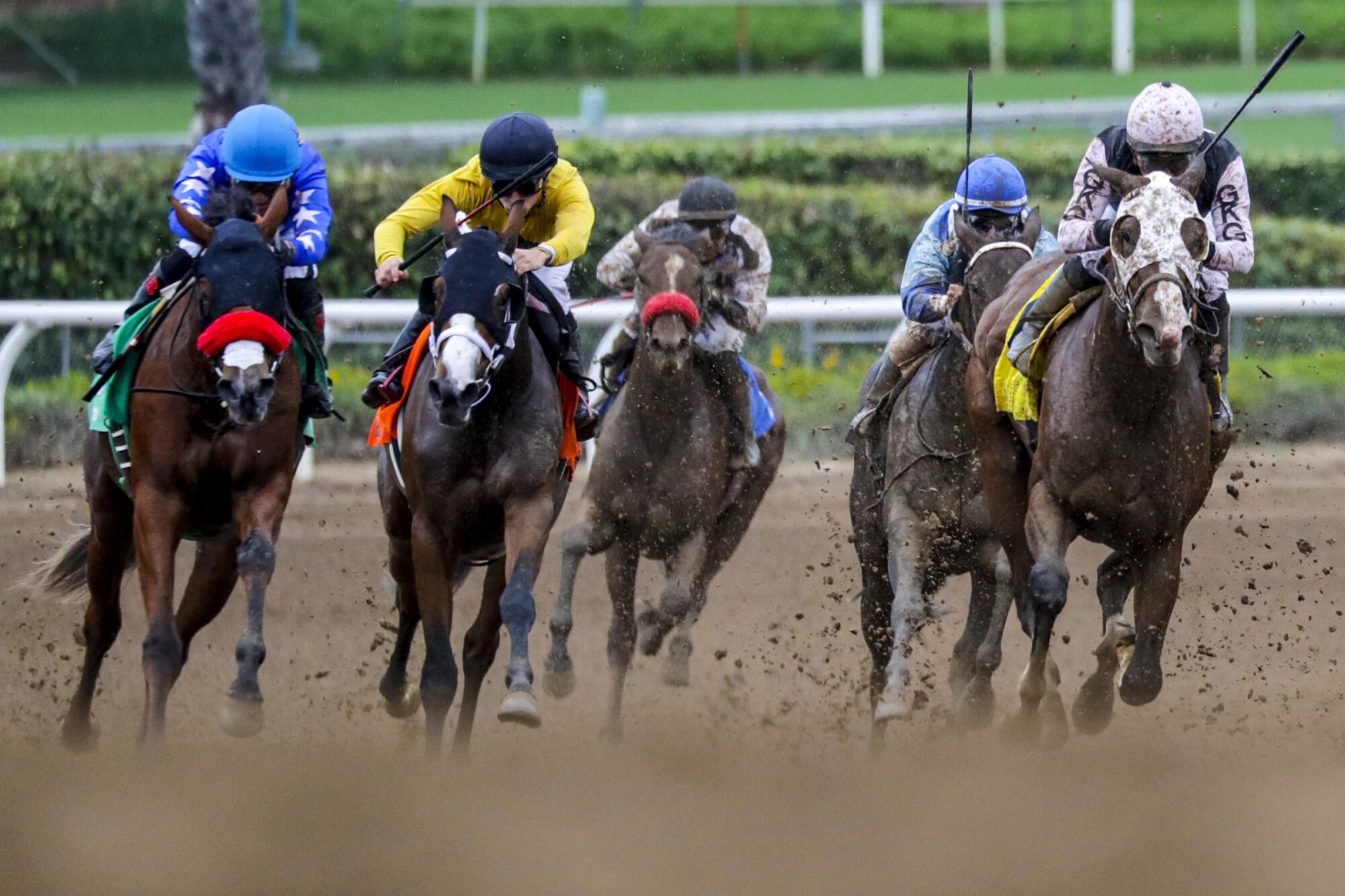
As grim as those stories can be, there is a real push for animal safety and welfare, especially in California, which has shown a 55% decrease in fatalities since 2019.
“The culture in Southern California as a whole has become very risk averse,” Carpenter said. “The clients who come to me today now say, ‘This horse isn’t just right, he’s not holding his left lead in his last breeze like he has in the past. Can we do a PET scan or MRI? Just to make sure he’s OK.’ Ten years ago, we almost never did imaging to make sure they are OK, but now we do it very routinely.”
The Santa Anita fatality crisis changed everything. The Stronach Group instituted a series of safety reforms, most of which were adopted by the CHRB, and then more layers of safety precautions were added.
But it comes with a cost. Racing is an expensive game and business decisions can be tough.
“If [Triple Crown winner] American Pharoah broke his sesamoid bone, then there would be no question about saving his life because he has a huge financial return if that horse can go to the breeding shed,” Carpenter said. “But if you have a $10,000 claimer gelding that would likely just become a pasture pet and the surgery is going to cost $20,000 for the first six weeks, then people make the decision to put the horse down because it doesn’t make financial sense to give him a chance.
Hours after having to euthanize a horse following an on-track injury, trainer Bob Baffert earned his record eighth Preakness win with National Treasure.
“In 2019, 19 of the 21 early fatalities were all fetlock failures. So, we asked ourselves, ‘If we removed finances from the discussion, because the procedure is very expensive, and we evaluated these horses solely from a medical perspective, would we have done surgery to give some of these horses a chance?’ ”
In stepped The Stronach Group (owner of Santa Anita), Del Mar Thoroughbred Club, Los Alamitos and the Thoroughbred Owners of California. They agreed to partner with the owners to offset some, or if the owner has little finances, all of the costs of the surgery and immediate aftercare.
The split between the groups is dependent on the owner’s ability to pay. In many cases, racing is a rich person’s game, so money is not the issue.
Carpenter has refined a procedure called arthrodesis, a surgery where a movable joint is made immovable. It’s similar to spinal fusion on humans. The cost is about $20,000 for the first six weeks. After surgery the horses can’t return to racing but can do things like light riding, trail riding or non-jumping forms of equestrian.
“Some are going into rehab-type facilities where there are disabled veterans or kids with disabilities and they ride the horses and take care of the horses,” Carpenter said. “There is a unique bond that these horses offer because they may have an injury with metal in their leg like the person has too.”
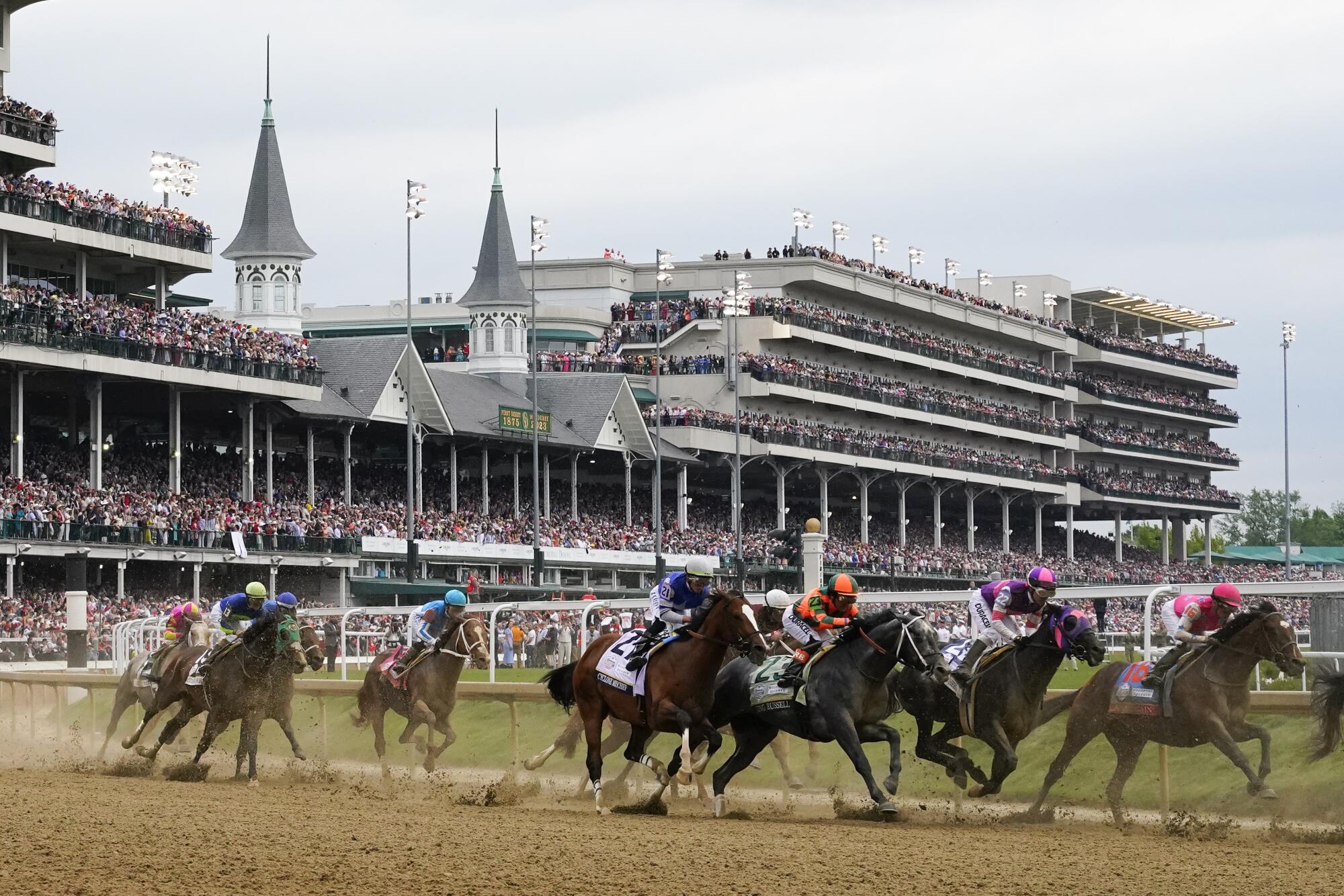
Santa Anita, along with the TOC, has had 12 successful interventions since 2020. Del Mar, which has a shorter season, has had five.
Blea points out that even if a horse can be saved, it’s not always the right decision.
“Over time nobody wants to see any horse suffer or in pain, 24 hours a day, seven days a week,” Blea said. “So quality of life has always been the crux on which decisions to euthanize or attempt surgery or heroic salvage-type procedures. The decision is what is that horse’s quality of life going to be.”
Racing is hoping to merge the optics and reality of saving horses into the fabric of everyday life at the track.
“I think everyone in the business is coming to the realization that for horse racing to survive and thrive, there can’t be any question that we are doing all we can to protect horses and make racing as safe as possible,” Arthur said. “We have to take care of horses before, during and after races.”
As Saturday’s Belmont Stakes approaches, those within horse racing hope to avoid a spate of deaths, or even a single one, for fear it could overshadow race day the way it did at Churchill Downs five weeks ago. The survival of the sport might depend on it.
Watch L.A. Times Today at 7 p.m. on Spectrum News 1 on Channel 1 or live stream on the Spectrum News App. Palos Verdes Peninsula and Orange County viewers can watch on Cox Systems on channel 99.
More to Read
Go beyond the scoreboard
Get the latest on L.A.'s teams in the daily Sports Report newsletter.
You may occasionally receive promotional content from the Los Angeles Times.

